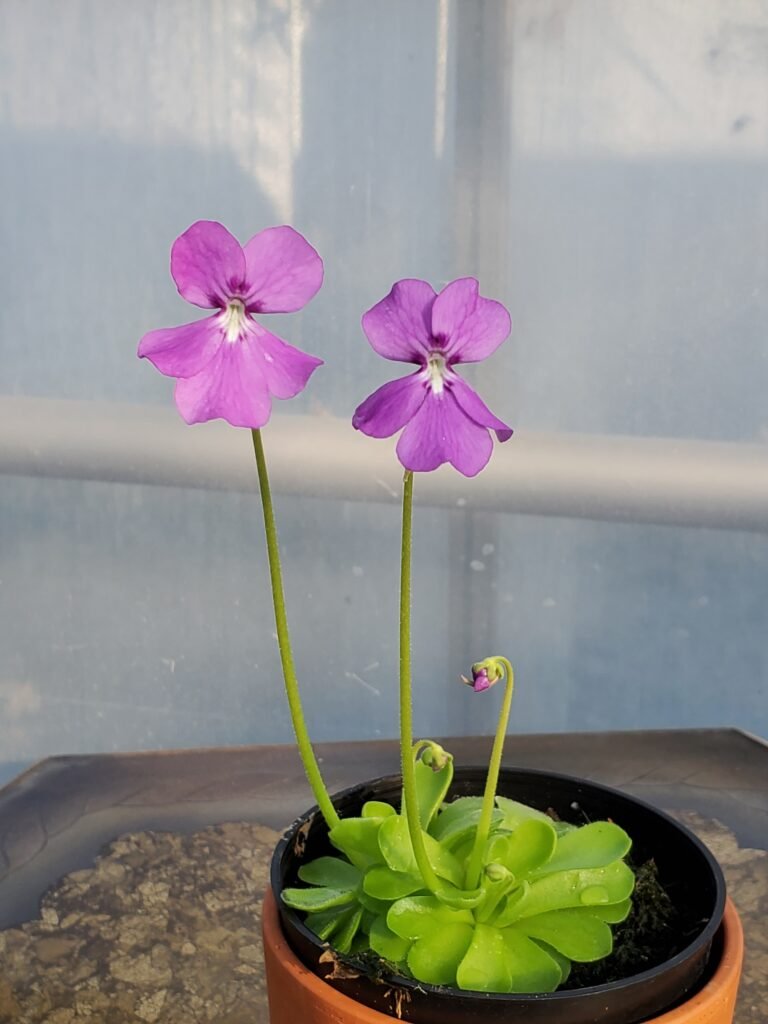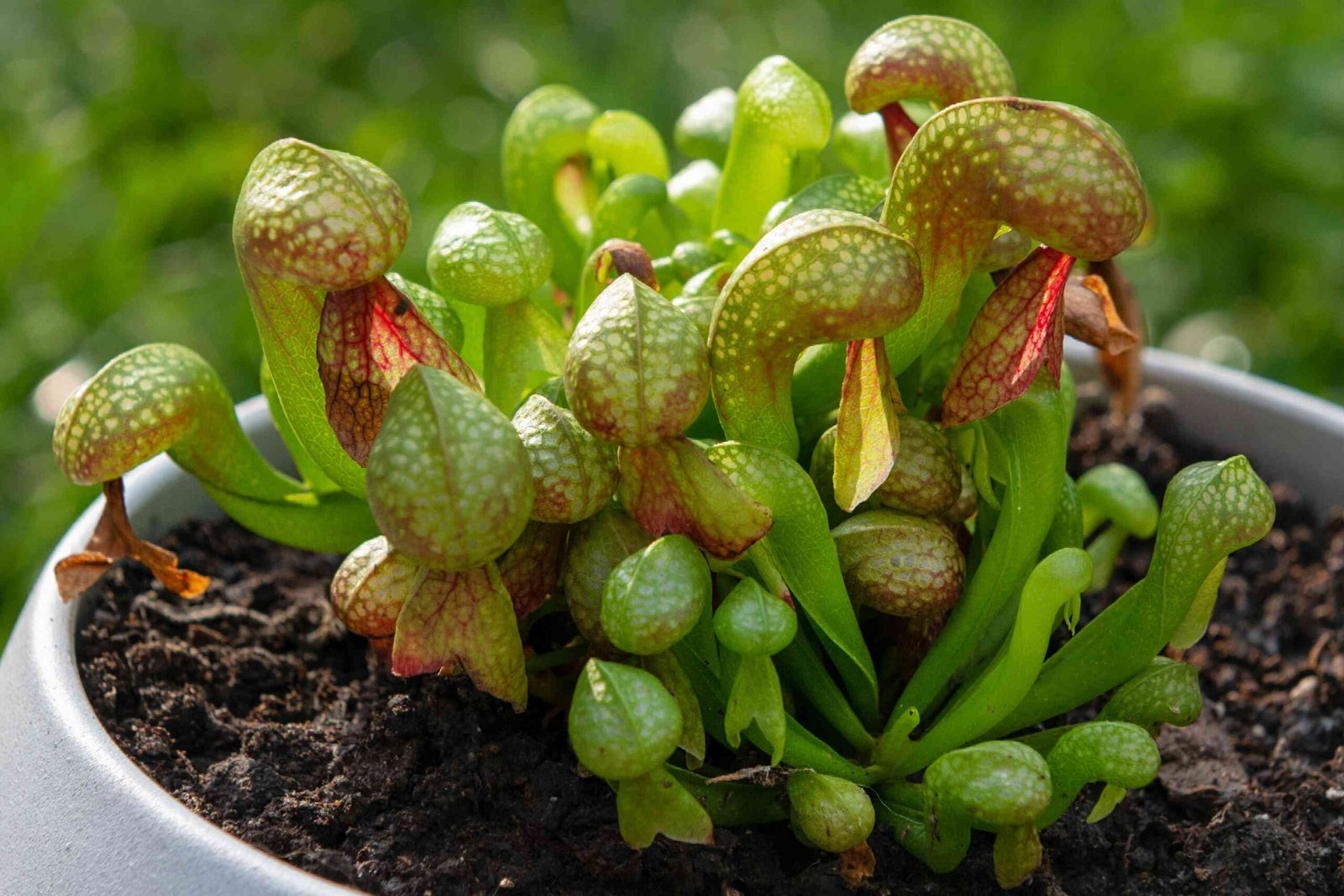Mastering the Art of Cultivating Butterwort: Insights into Care, Propagation, and Ecological Significance
Introduction
Butterworts, scientifically known as Pinguicula, are a captivating genus of carnivorous plants renowned for their unique method of trapping insects with sticky, glandular leaves. Native to diverse habitats ranging from Europe and North America to Central and South America, these plants thrive in nutrient-poor environments by supplementing their diet with insects. This guide provides an in-depth look into the care, propagation, and ecological role of Butterworts, offering valuable information for enthusiasts and gardeners.
Quick Facts
| Fact | Details |
|---|---|
| Scientific Name | Pinguicula |
| Common Names | Butterwort, Flypaper Plant |
| Native Regions | Europe, North America, Central and South America |
| Optimal Humidity | 50-80% |
| Optimal Temperature | 60-80°F (15-27°C) |
| Soil Type | Nutrient-poor, well-draining, slightly acidic |
| Watering Needs | Keep soil moist, use distilled or rainwater |

Physical Characteristics
Butterworts are small, herbaceous plants characterized by their rosette of succulent leaves, which are covered in sticky glandular trichomes that trap insects. The leaves are typically green but can sometimes exhibit shades of red or purple depending on the species and growing conditions. Butterworts produce delicate, often brightly colored flowers that rise above the leaf rosette, adding to their ornamental appeal.
Nutrition, Foods to Avoid
Butterworts capture small insects and digest them to obtain essential nutrients. They do not require fertilization and can be harmed by the application of traditional fertilizers. Instead, allowing them to capture their prey naturally is the best way to ensure they receive the necessary nutrients.
Health and Diseases
Butterworts are generally hardy but can be susceptible to root rot if overwatered or planted in poorly draining soil. Common pests include aphids and fungus gnats, which can be managed with insecticidal soap or neem oil. Maintaining proper watering practices and ensuring good air circulation can help prevent these issues.
Propagation Methods
Propagation of Butterworts can be achieved through:
- Leaf Pullings: Place a healthy leaf on moist soil, and it will produce new plantlets from the base.
- Division: Mature plants can be divided carefully to create new plants.
- Seed: Growing from seed is less common but can be done with patience and the right conditions.
Pricing Information
| Type | Average Price |
|---|---|
| Small potted plant | $10 – $20 |
| Mature potted plant | $20 – $40 |
| Rare species | $40 – $100+ |
Factors Affecting Price
- Plant Size and Age: Larger and more mature plants typically command higher prices.
- Species and Rarity: Rare or unusual species are more expensive.
- Health and Condition: Plants in optimal health with vibrant leaves and flowers are more valuable.
Price in Different Regions
| Region | Average Price |
|---|---|
| USA | $20 |
| Europe | €18 |
| Asia | ¥1500 |

FAQs
Q: How often should I water my Butterwort?
A: Keep the soil consistently moist but not waterlogged. Use distilled or rainwater to avoid mineral build-up.
Q: Can Butterworts be grown indoors?
A: Yes, Butterworts can thrive indoors if provided with bright, indirect light and maintained at appropriate humidity levels.
Q: Do Butterworts need a dormancy period?
A: Some species require a winter dormancy period with cooler temperatures, while others do not. It’s important to know the specific needs of your Butterwort species.
Related Plants
Other carnivorous plants like Sundews (Drosera) and Venus Flytraps (Dionaea muscipula) share similar care requirements and can be grown alongside Butterworts.
References
- International Carnivorous Plant Society
- Botanical Society of America
- National Geographic: Carnivorous Plants
Categories
Carnivorous Plants, Indoor Gardening, Exotic Plants, Plant Propagation, Sustainable Gardening
This comprehensive guide provides all the essential information needed to cultivate and care for Butterworts successfully. Whether for personal enjoyment or as part of a larger collection, these fascinating plants offer a unique and rewarding gardening experience.
Views: 6











